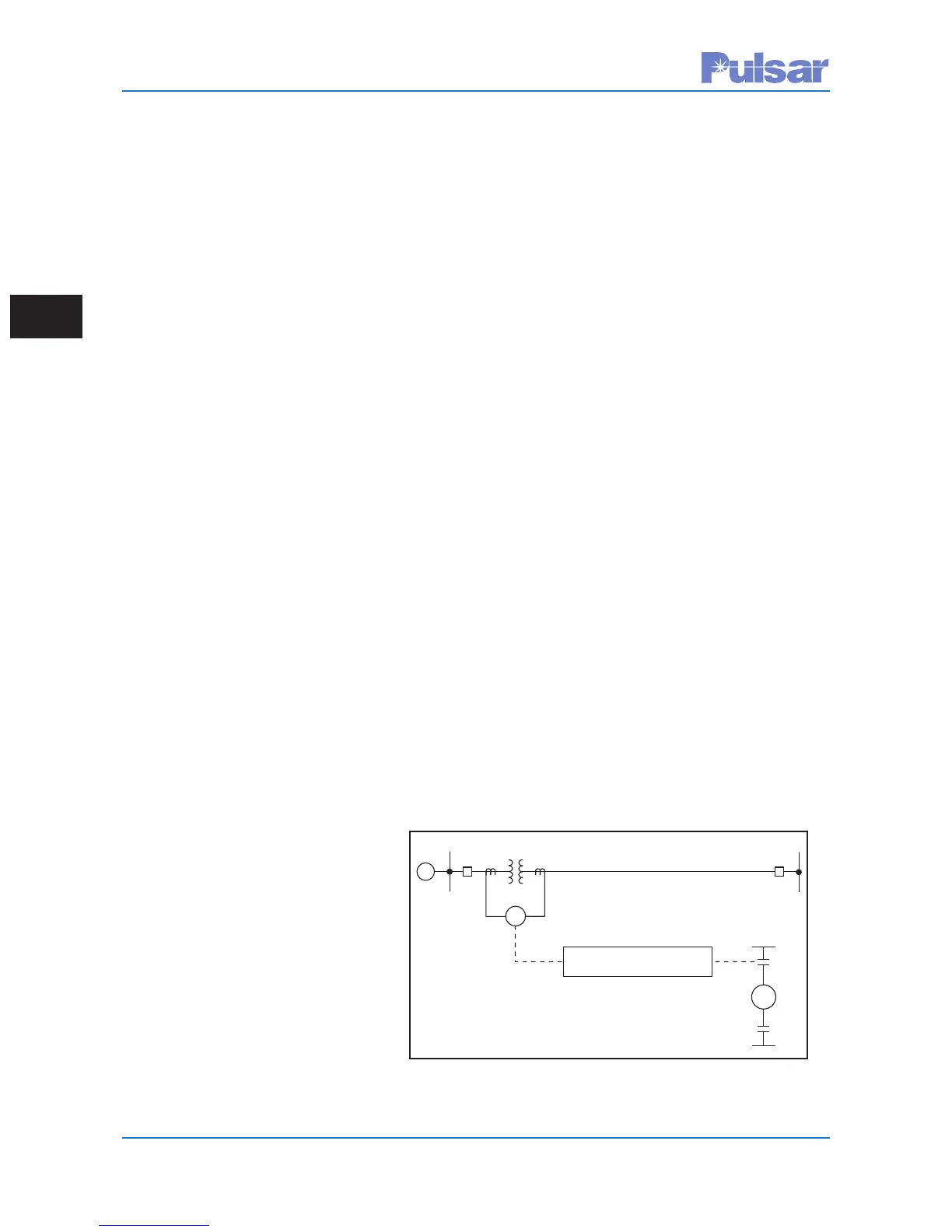Page 3–26
UPLC-II™ System Manual
3.6 Direct Transfer-Trip (DTT)
Systems
Direct transfer-trip systems provide circuit-break-
er tripping at remote or receiver terminals, without
any supervision by fault detectors. The most
important consideration in a direct transfer-trip
system is the type of channel applied. The com-
munications equipment must carry the total bur-
den of system security and dependability.
Direct transfer-trip systems are applied for:
• Line protection with non-permissive under
reaching transfer-trip systems.
• Transformer protection where there is no
circuit breaker between the transformer and
transmission line.
• Shunt reactor protection.
• Remote breaker failure protection.
A sample schematic is shown in figure 3-26, near
the end of the chapter.
3.6.1 Transformer Protection
A typical transformer protection scheme is illus-
trated in Figure 3–17. A direct trip channel is
keyed to the trip state when the transformer pro-
tective relays operate. The received trip signal will
then trip the remote end breaker and lock out
reclosing.
Although it is no longer widely used, you may use
a ground switch operated by the transformer pro-
tective relays for transformer protection. In this
technique, a ground fault is initiated on the trans-
mission line at G, providing adequate
fault current for the ground relays at H to
trip the breaker at H. This system is slower but is
widely used on lower voltage systems and is fairly
simple and straightforward. It does not require any
secure communication medium between G and H.
For this type of application, the ground relays at H
can be set to operate for 100 percent of the line
and not overreach to bus G.
While a single switch on one phase is normally
applied, you may use a double switch on two
phases to initiate a double-phase-to-ground fault.
In the latter case, both phase and ground relays
can operate to ensure redundancy. Fault grounding
is not applicable to all systems because of high
short-circuit capacity.
3.6.2 Shunt Reactor Protection
Shunt reactors are frequently used on HV and
EHV lines. These line reactors are connected on
the line side of the circuit breakers (Fig. 3–18). A
remote trip channel is thus required for a fault in
the shunt reactor.
3.6.3 Remote Breaker-Failure
Protection
A remote breaker-failure system is necessary
where a multi-breaker bus, such as a breaker-and-
a-half or ring bus scheme, is applied at a transmis-
sion line terminal. A direct transfer-trip system
will be a part of the remote breaker-failure protec-
tion.
Direct Transfer Trip Channel
87
G H
Transformer Bank
Transmission Line
DTT
52c
52
TC
+
–
Figure 3–17. Direct Transfer Trip for Transformer Protection
